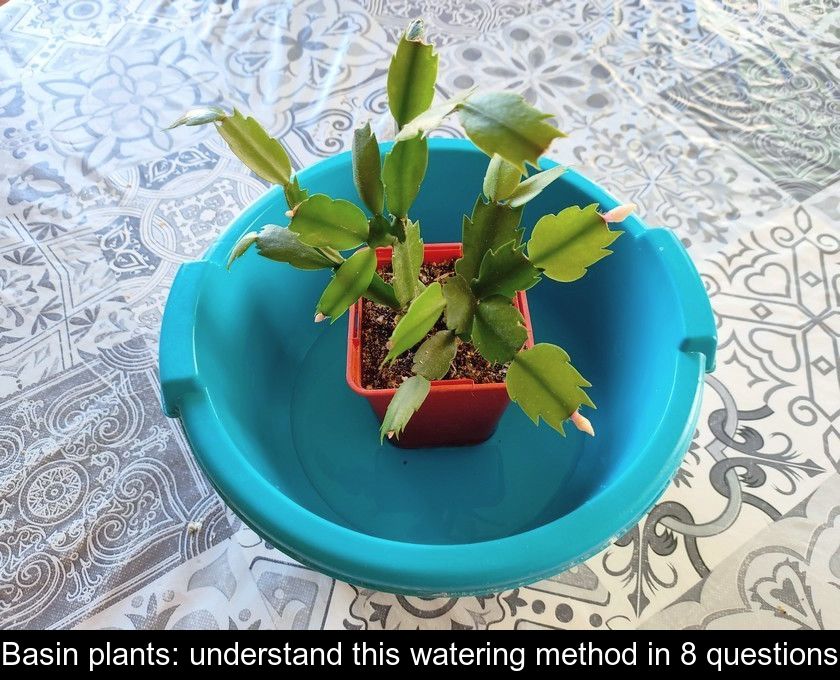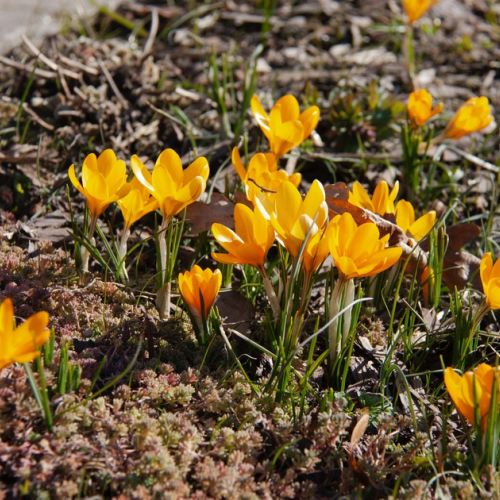Basin Plants: Understand This Watering Method In 8 Questions
Soaking plants is a watering technique that consists in soaking the pot in a basin of water. This allows the plant to rehydrate thanks to the phenomenon of capillarity. If you want to use this method, we explain how to soak plants in 8 questions.
1- What does it mean to drench a plant?
The term bassing a plant means placing it in a basin, sink or other container filled with water.
The bassing technique, also known as soaking, is very effective in rehydrating the root ball when it has completely dried out.
2- What are the advantages of basking plants?
Drenching is a technique to know to properly rehydrate plants whose soil is parched.
Basking plants is more effective than watering them from above because the water seeps through the pot's drain hole and rises to the surface of the root ball through the phenomenon of capillarity.
Thus, the substrate soaks up water exactly like a sponge that swells back up as it soaks up liquid.
This method of watering also has the advantage of avoiding mistakes, such as wetting moisture-sensitive foliage.
3- Which plants should be bedded?
Basking is generally recommended for houseplants, but it is also possible to use it in the garden to rehydrate the clumps of plants to be transplanted and facilitate their recovery.
Simply soak the cups or other containers in a basin of water before planting.
When it comes to houseplants, the soaking technique is a good watering method for species :
- that do not like to have wet leaves or flowers, such as cyclamen or saintpaulia
- that fear stagnant water at the bottom of the saucer like orchids
- which are epiphytic plants like tillandsia or guzmania
- which are used in suspension.
As this technique can be applied to many species of plants, it is interesting to know how to baste the plants to water them without making them rot.
4- When to drench a plant?
As I explained above, it is recommended to soak the plants before transplanting them.
For indoor plants, the frequency of basking is once to twice a month depending on the ambient temperature and the quality of the soil.
You can do this soaking when you notice that the root ball is dried out.
5- What type of water should I use?
To avoid thermal shock, it is advisable to use room temperature water. If you use tap water, let it sit for a few hours before soaking.
Also remember to baste plants with non-calcareous water or filtered water for species that fear limescale such as orchids and especially phalaenopsis.
On stormy days, place containers outside to catch rain water which is ideal for this watering technique.
6- How do I drench the plants?
The method for soaking plants is very simple. Just soak the pot in a container filled with water or a sink.
Just make sure that the water level does not exceed three-quarters of the height of the pot or bucket so that the heart of the plant and the leaves do not get wet.
To note: as a general rule, the soaking water should not be in contact with the plant's crown. However, for some specific epiphytic plants, it is sometimes recommended soaking the leaves. In this particular case, the entire above-ground parts of the plant should be soaked in water, i.e. both its stem and leaves.
7- How long to soak the plants?
It is recommended that you drench the plants until the soil becomes moist on the surface.
Once the water has diffused by capillary action to the surface of the substrate, you can remove the pot from the water.
Of course, the drier the soil, the longer this process will take. On average, you should expect a soaking time of 30 to 60 minutes.
8- What should be done after soaking?
After basking houseplants, it is important to let them drain completely before replacing the pot in its saucer or planter.
As we told you above, many bedding plants fear standing water at the bottom of the saucer!













